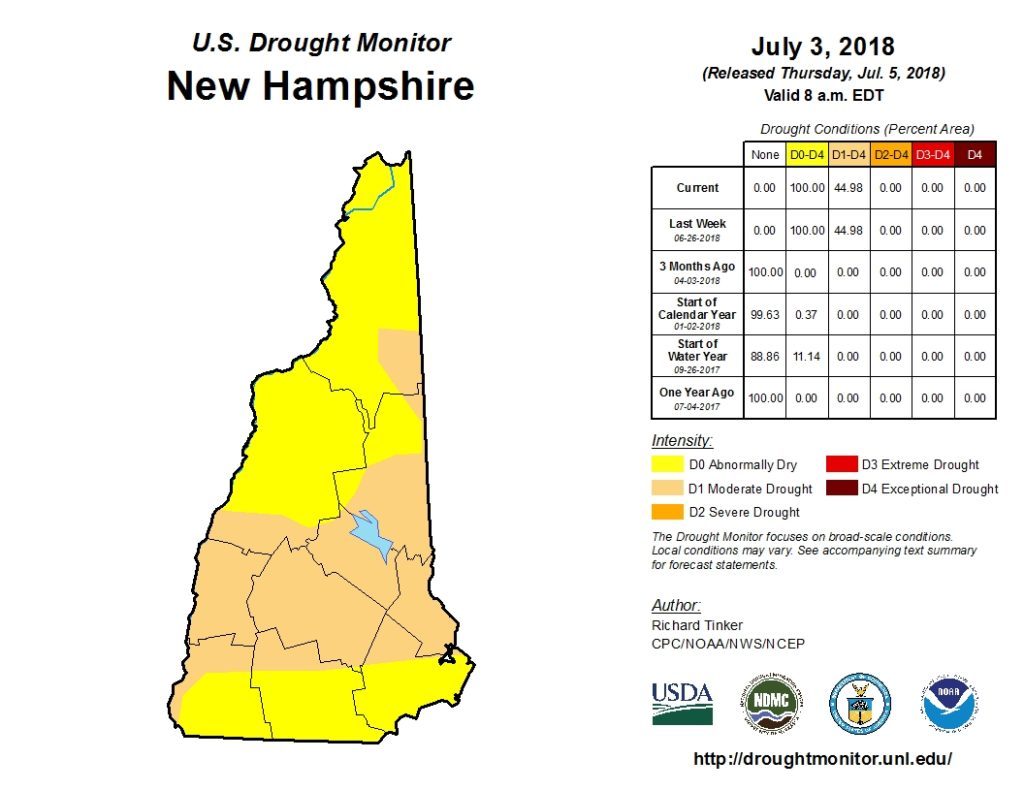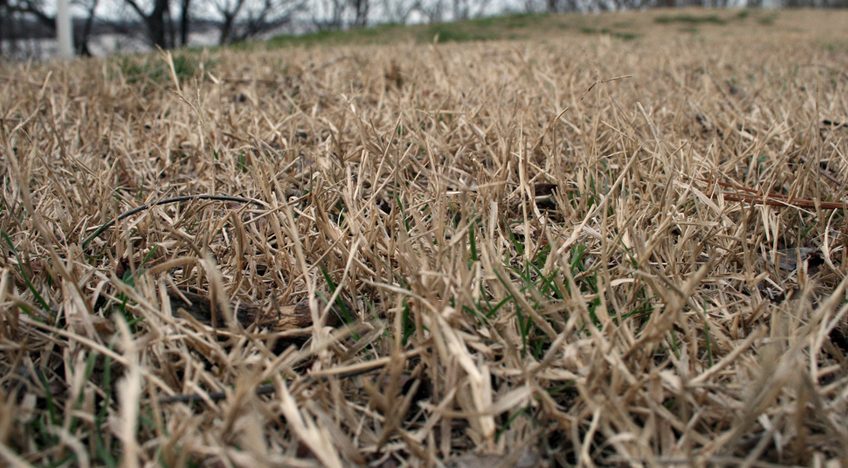By now you’ve no doubt noticed how hot and dry it’s been this summer. While that’s great for beach lovers and the companies who sell to them, it can be a problem for those of us trying to care for our lawns. As you can see below, the United States Drought Monitor includes the entire state of New Hampshire being in “Abnormally Dry” conditions and 44% of the state’s population is experiencing a moderate drought.

So how do you keep your lawn healthy under difficult conditions and government mandated water restrictions? It turns out that while you can’t completely overcome the effects of a drought, there are steps you can take to make sure your lawn will come through it healthy and ready to start growing again.
BEFORE THE DROUGHT
While there are a lot of places in the US where drought is just a way of life in the summer, New England typically isn’t one of them. Unfortunately climate change means that this is going to become more the norm with each passing year. So it makes sense to prepare your lawn so it’s as strong and healthy as possible before these summer dry spells.
- Reduce thatch and compaction.
- Mow often so you never remove more than the top third of grass blades.
- Leave clippings on the lawn.
- Make sure your mower blades are sharp
DURING THE DROUGHT
It’s hot and dry, and your weather app isn’t showing rain for a while. Your town has sent out notices telling you the restrict water usage. You ask your dog if he wants to go for a walk and he looks at you like you’re crazy. You’re officially in a drought. Despite all this, there are still several steps take steps to keep your lawn healthy.
- Raise the height of your mower – grass grows slowly during a drought so you’ll probably have to mow it less frequently than during normal conditions. But when you do mow, raise the height of your mower so that you’re not taking off more than the top 1/3 of the blades. For New England, a general rule of thumb is a deck height range of 3-4 inches. Taller grass encourages deeper rooting and puts more shade on the soil, conserving the moisture in it.
- Water responsibly – Most lawns don’t need to be watered every day and can do just fine getting ½ to ¾ of an inch a couple days a week. If you are able to water your lawn, do it before 8 a.m. and apply it uniformly to avoid waste from evaporation or runoff.
- Embrace the brown – You’ve spent a lot of time, effort and money on your lawn, so it’s only natural to cringe every time you look at all brown taking over. But brown isn’t necessarily a bad thing during a drought. It means that your grass is reacting naturally to its environment by temporarily going dormant. Think of it like a hibernating bear preserving its resources during the most difficult part of the year. And like that bear, it’s a bad idea to wake up the grass before its ready by heavily watering it. You’ll make the plant use up the resources it so desperately needs. Unless you’re experience an exceptionally long and hot drought (which is very rare in New England), your grass will green back up when conditions improve.
Of course, one of the best ways to make sure your lawn stays healthy throughout the year is to let the experts take care of it. Our Lawn Care team will be happy to come in and assess your property and determine the best plan for ensuring you have a lawn you can enjoy for years to come. Just give us a buzz at 603.332.1246 or email [email protected].
